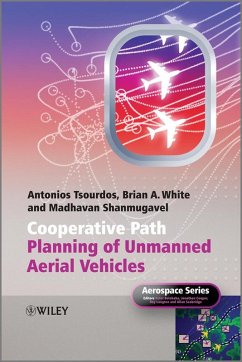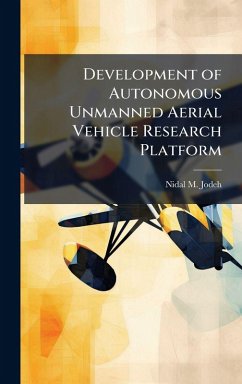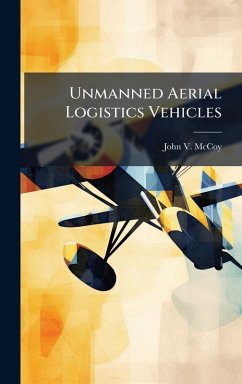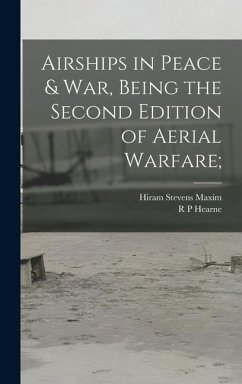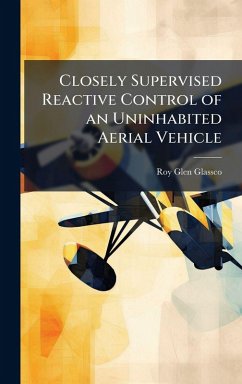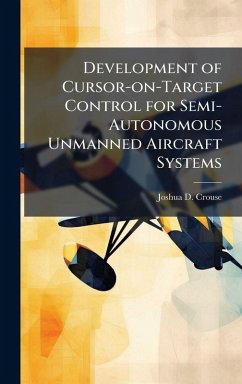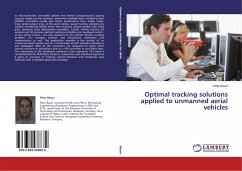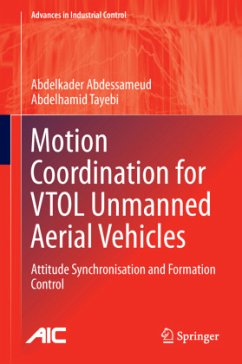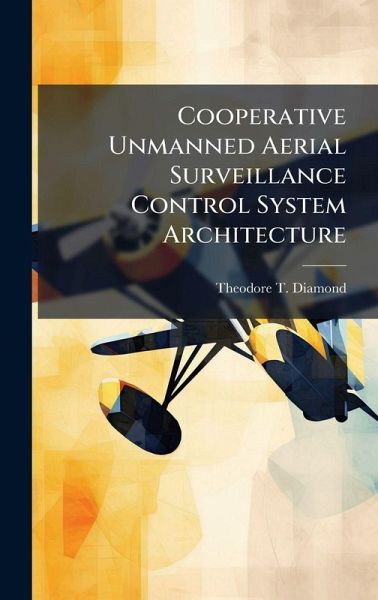
Cooperative Unmanned Aerial Surveillance Control System Architecture
Versandkostenfrei!
Versandfertig in über 4 Wochen
30,99 €
inkl. MwSt.
Weitere Ausgaben:

PAYBACK Punkte
15 °P sammeln!
Intelligence, surveillance and reconnaissance (ISR) is a high-demand Department of Defense mission performed by unmanned aircraft systems (UAS) at the tactical and theater levels. Coordinating UAS aircraft through cooperative control offers the advantages of persistence, distributed and adaptable sensor coverage, and reduced revisit time on points of interest. The purpose of this thesis is to apply systems engineering principals to the problem of developing a flexible, common control system for cooperative UAS surveillance at the tactical level. The AFIT team developed a concept of operations ...
Intelligence, surveillance and reconnaissance (ISR) is a high-demand Department of Defense mission performed by unmanned aircraft systems (UAS) at the tactical and theater levels. Coordinating UAS aircraft through cooperative control offers the advantages of persistence, distributed and adaptable sensor coverage, and reduced revisit time on points of interest. The purpose of this thesis is to apply systems engineering principals to the problem of developing a flexible, common control system for cooperative UAS surveillance at the tactical level. The AFIT team developed a concept of operations (CONOPS) encompassing various users and surveillance tasks. The team then used the scenarios in the CONOPS to build a conceptual architecture. This work has been selected by scholars as being culturally important, and is part of the knowledge base of civilization as we know it. This work was reproduced from the original artifact, and remains as true to the original work as possible. Therefore, you will see the original copyright references, library stamps (as most of these works have been housed in our most important libraries around the world), and other notations in the work. This work is in the public domain in the United States of America, and possibly other nations. Within the United States, you may freely copy and distribute this work, as no entity (individual or corporate) has a copyright on the body of the work. As a reproduction of a historical artifact, this work may contain missing or blurred pages, poor pictures, errant marks, etc. Scholars believe, and we concur, that this work is important enough to be preserved, reproduced, and made generally available to the public. We appreciate your support of the preservation process, and thank you for being an important part of keeping this knowledge alive and relevant.



